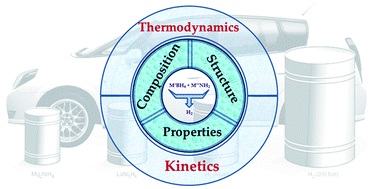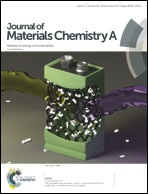Light metal borohydrides/amides combined hydrogen storage systems: composition, structure and properties
Abstract
The implementation of a future economy based on hydrogen-related energy needs an urgent development of efficient, safe, and economic solid-state hydrogen-storage materials. During the search process for novel materials for storing hydrogen, research interests in the past few decades have been intensively focused on light metal borohydrides and amides as two representative chemical complex hydrides with high hydrogen capacities. Recently, a large number of studies have reported new borohydride/amide combined systems that expand the scope of hydrogen-storage materials. Here, we review the interaction between light metal borohydrides and amides for storing hydrogen, with a special emphasis on the synthetic strategies and structural, physical, and chemical properties, which reveal a correlation between the composition, structure, and dehydrogenation properties and also provide general principles to the design of new combined systems with tailored functionality. This review also demonstrates the current progress on the dehydrogenation kinetic improvement of borohydride/amide combined systems.

- This article is part of the themed collection: Recent Review Articles


 Please wait while we load your content...
Please wait while we load your content...